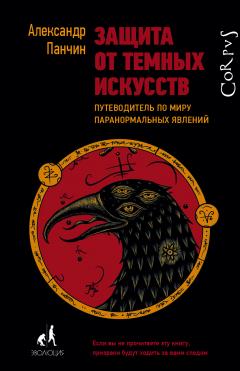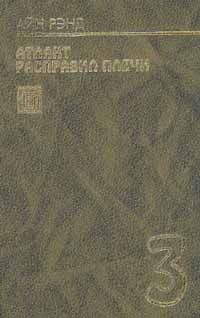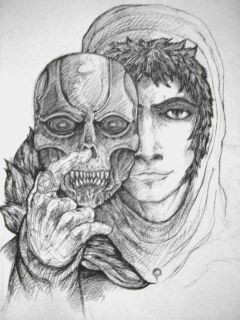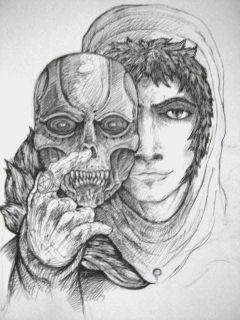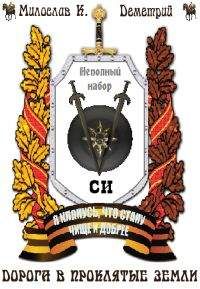33
Bostrom K. J. et al.: A computational model unifies apparently contradictory findings concerning phantom pain. Sci Rep 2014, 4: 5298.
Baev K. V. et al.: [Depolarization of primary afferents during fictitious scratching of thalamic cats]. Neirofiziologiia 1978, 10 (2): 173–176.
Ramachandran V. S.: Phantoms in the Brain: Probing the Mysteries of the Human Mind. 1999.
Ramachandran V. S., Rogers-Ramachandran D.: Synaesthesia in phantom limbs induced with mirrors. Proc Biol Sci 1996, 263 (1369): 377–386.
Kim S. Y., Kim Y. Y.: Mirror therapy for phantom limb pain. Korean J Pain 2012, 25 (4): 272–274.
Tilak M. et al.: Mirror therapy and transcutaneous electrical nerve stimulation for management of phantom limb pain in amputees – a single blinded randomized controlled trial. Physiother Res Int 2016, 21 (2): 109–115.
Barbin J. et al.: The effects of mirror therapy on pain and motor control of phantom limb in amputees: a systematic review. Ann Phys Rehabil Med 2016, 59 (4): 270–275.
Cole J. et al.: Exploratory findings with virtual reality for phantom limb pain; from stump motion to agency and analgesia. Disabil Rehabil 2009, 31 (10): 846–854.
Sano Y. et al.: Reliability of phantom pain relief in neurorehabilitation using a multimodal virtual reality system. Conf Proc IEEE Eng Med Biol Soc 2015, 2015: 2482–2485.
Botvinick M., Cohen J.: Rubber hands “feel” touch that eyes see. Nature 1998, 391 (6669): 756.
Guterstam A. et al.: Illusory ownership of an invisible body reduces autonomic and subjective social anxiety responses. Sci Rep 2015, 5: 9831.
Wada M. et al.: The rubber tail illusion as evidence of body ownership in mice. J Neurosci 2016, 36 (43): 11133–11137.
Brunner H. G. et al.: Abnormal behavior associated with a point mutation in the structural gene for monoamine oxidase A. Science 1993, 262 (5133): 578–580.
Caspi A. et al.: Role of genotype in the cycle of violence in maltreated children. Science 2002, 297 (5582): 851–854.
Shih J. C. et al.: Monoamine oxidase: from genes to behavior. Annu Rev Neurosci 1999, 22: 197–217.
Dorfman H. M. et al.: Neurobiological mechanisms for impulsive-aggression: the role of MAOA. Curr Top Behav Neurosci 2014, 17: 297–313.
Burnet H. et al.: Altered respiratory activity and respiratory regulations in adult monoamine oxidase A-deficient mice. J Neurosci 2001, 21 (14): 5212–5221.
Herraiz T. et al.: β-Carboline alkaloids in Peganum harmala and inhibition of human monoamine oxidase (MAO). Food Chem Toxicol 2010, 48 (3): 839–845.
Sadr Mohammadi R. et al.: Peganum harmala (Aspand) intoxication; a case report. Emerg (Tehran) 2016, 4 (2): 106–107.
Benbott A. et al.: Study of the chemical components of Peganum harmala and evaluation of acute toxicity of alkaloids extracted in the Wistar albino mice. J Mater Environ Sci 2013, 4 (4): 558–565.
Morgado P. et al.: Cotard syndrome without depressive symptoms in a schizophrenic patient. Case Rep Psychiatry 2015, 2015: 643191.
Ruminjo A., Mekinulov B.: A case report of Cotard’s syndrome. Psychiatry (Edgmont) 2008, 5 (6): 28–29.
McKay R., Cipolotti L.: Attributional style in a case of Cotard delusion. Conscious Cogn 2007, 16 (2): 349–359.
Young A. W., Leafhead K. M.: Betwixt life and death: case studies of the Cotard delusion. In Halligan P. W., Marshall J. C. (Eds.): Method in Madness: Case Studies in Cognitive Neuropsychiatry. 1996.
Ramachandran V. S.: A Brief Tour of Human Consciousness: From Impostor Poodles to Purple Numbers. 2005.
Charland-Verville V. et al.: Brain dead yet mind alive: a positron emission tomography case study of brain metabolism in Cotard’s syndrome. Cortex 2013, 49 (7): 1997–1999.
Grover S. et al.: Cotard’s syndrome: two case reports and a brief review of literature. J Neurosci Rural Pract 2014, 5 (Suppl 1): S59–62.
Hellden A. et al.: Death delusion. BMJ 2007, 335 (7633): 1305.
Josephs K. A.: Capgras syndrome and its relationship to neurodegenerative disease. Arch Neurol 2007, 64 (12): 1762–1766.
Corlett P. R. et al.: Capgras syndrome induced by ketamine in a healthy subject. Biol Psychiatry 2010, 68 (1): e1–2.
Thiel C. M. et al.: When a loved one feels unfamiliar: a case study on the neural basis of Capgras delusion. Cortex 2014, 52: 75–85.
Barton J. J. et al.: Lesions of the fusiform face area impair perception of facial configuration in prosopagnosia. Neurology 2002, 58 (1): 71–78.
Brighetti G. et al.: “Far from the heart far from the eye”: evidence from the Capgras delusion. Cogn Neuropsychiatry 2007, 12 (3): 189–197.
Bauer R. M.: Autonomic recognition of names and faces in prosopagnosia: a neuropsychological application of the Guilty Knowledge Test. Neuropsychologia 1984, 22 (4): 457–469.
Ellis H. D., Young A. W.: Accounting for delusional misidentifications. Br J Psychiatry 1990, 157: 239–248.
Ellis H. D., Lewis M. B.: Capgras delusion: a window on face recognition. Trends Cogn Sci 2001, 5 (4): 149–156.
Darby R. R., Caplan D.: “Cat-gras” delusion: a unique misidentification syndrome and a novel explanation. Neurocase 2016, 22 (2): 251–256.
Lewis M. et al.: Autonomic responses to familiar faces without autonomic responses to familiar voices: evidence for voice-specific Capgras delusion. Cogn Neuropsychiatry 2001, 6 (3): 217–228.
van Lommel P. et al.: Near-death experience in survivors of cardiac arrest: a prospective study in the Netherlands. Lancet 2001, 358 (9298): 2039–2045.
Lempert T. et al.: Syncope and near-death experience. Lancet 1994, 344 (8925): 829–830.
Lempert T. et al.: Syncope: a videometric analysis of 56 episodes of transient cerebral hypoxia. Ann Neurol 1994, 36 (2): 233–237.
Klemenc-Ketis Z. et al.: The effect of carbon dioxide on near-death experiences in out-of-hospital cardiac arrest survivors: a prospective observational study. Crit Care 2010, 14 (2): R56.
Blanke O. et al.: Stimulating illusory own-body perceptions. Nature 2002, 419 (6904): 269–270.
Blanke O., Arzy S.: The out-of-body experience: disturbed self-processing at the temporo-parietal junction. Neuroscientist 2005, 11 (1): 16–24.
Ekstrom A. D. et al.: Cellular networks underlying human spatial navigation. Nature 2003, 425 (6954): 184–188.
Matsumura N. et al.: Spatial- and task-dependent neuronal responses during real and virtual translocation in the monkey hippocampal formation. J Neurosci 1999, 19 (6): 2381–2393.
O’Keefe J., Dostrovsky J.: The hippocampus as a spatial map. Preliminary evidence from unit activity in the freely-moving rat. Brain Res 1971, 34 (1): 171–175.
Burgess N., O’Keefe J.: Neural representations in human spatial memory. Trends Cogn Sci 2003, 7 (12): 517–519.
Hartley T. et al.: Space in the brain: how the hippocampal formation supports spatial cognition. Philos Trans R Soc Lond B Biol Sci 2014, 369 (1635): 20120510.
Hafting T. et al.: Microstructure of a spatial map in the entorhinal cortex. Nature 2005, 436 (7052): 801–806.
Kunz L. et al.: Reduced grid-cell-like representations in adults at genetic risk for Alzheimer’s disease. Science 2015, 350 (6259): 430–433.
Parnia S. et al.: AWARE-AWAreness during REsuscitation – a prospective study. Resuscitation 2014, 85 (12): 1799–1805.
Панчин А.: Апофения. 2014. www.smashwords.com/books/view/461313
Manford M., Andermann F.: Complex visual hallucinations. Clinical and neurobiological insights. Brain 1998, 121 (Pt 10): 1819–1840.
Azevedo F. A. et al.: Equal numbers of neuronal and nonneuronal cells make the human brain an isometrically scaled-up primate brain. J Comp Neurol 2009, 513 (5): 532–541.
Перевод Н. Цветкова. – Здесь и далее прим. ред.
Mattelaer J. J.: The phallus tree: a medieval and renaissance phenomenon. J Sex Med 2010, 7 (2 Pt 1): 846–851.
Mattelaer J. J., Jilek W.: Koro – the psychological disappearance of the penis. J Sex Med 2007, 4 (5): 1509–1515.
Chowdhury A. N. et al.: Puppy pregnancy in humans: a culture-bound disorder in rural West Bengal, India. Int J Soc Psychiatry 2003, 49 (1): 35–42.
Germiniani F. M. et al.: Tourette’s syndrome: from demonic possession and psychoanalysis to the discovery of gene. Arq Neuropsiquiatr 2012, 70 (7): 547–549.
Kurlan R.: Clinical practice. Tourette’s Syndrome. N Engl J Med 2010, 363 (24): 2332–2338.
Murray E. D. et al.: The role of psychotic disorders in religious history considered. J Neuropsychiatry Clin Neurosci 2012, 24 (4): 410–426.
Devinsky O., Lai G.: Spirituality and religion in epilepsy. Epilepsy Behav 2008, 12 (4): 636–643.
Kemp S.: Modern myth and medieval madness: views of mental illness in the European Middle Ages and Renaissance. NZ J Psychol 1985, 14 (1): 1–8.
Sherman L., Zimmerman M.: Ergotism and its effects on society and religion. J Nutr Immunol 1994, 2 (3): 127–136.
Kemp S.: Modern myth and medieval madness: views of mental illness in the European Middle Ages and Renaissance. NZ J Psychol 1985, 14 (1): 1–8.
Tajima-Pozo K. et al.: Practicing exorcism in schizophrenia. BMJ Case Rep 2011, 2011.
Basedow H.: The Australian Aboriginal. 1925.
Cannon W. B.: “Voodoo” death. American Anthropologist, 1942; 44 (new series): 169–181. Am J Public Health 2002, 92 (10): 1593–1596; discussion 1594–1595.
Milton G. W.: Self-willed death or the bone-pointing syndrome. Lancet 1973, 1 (7817): 1435–1436.
Milton G. W.: Self-willed death or the bone-pointing syndrome. Lancet 1973, 1 (7817): 1435–1436.
Appels C. W., Bolk J. H.: Sudden death after emotional stress: a case history and literature review. Eur J Intern Med 2009, 20 (4): 359–361.
Vlastelica M.: Emotional stress as a trigger in sudden cardiac death. Psychiatr Danub 2008, 20 (3): 411–414.
Hlavaty L., Sung L.: Applying the principles of homicide by heart attack. Am J Forensic Med Pathol 2016, 37 (2): 112–117.
Nyegaard M. et al.: Mutations in calmodulin cause ventricular tachycardia and sudden cardiac death. Am J Hum Genet 2012, 91 (4): 703–712.
Wilbert-Lampen U. et al.: Cardiovascular events during World Cup soccer. N Engl J Med 2008, 358 (5): 475–483.
Meisel S. R. et al.: Effect of Iraqi missile war on incidence of acute myocardial infarction and sudden death in Israeli civilians. Lancet 1991, 338 (8768): 660–661.
Bergovec M. et al.: Acute myocardial infarction among civilians in Zagreb city area. Lancet 1992, 339 (8788): 303.
Suzuki S. et al.: Hanshin-Awaji earthquake as a trigger for acute myocardial infarction. Am Heart J 1997, 134 (5 Pt 1): 974–977.
